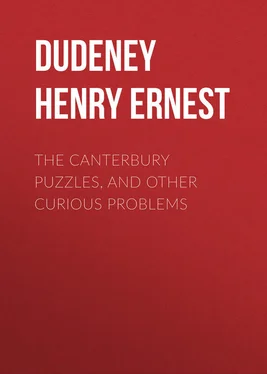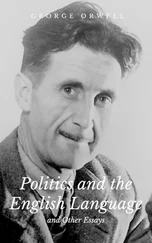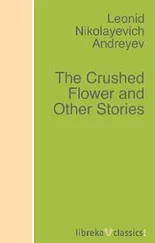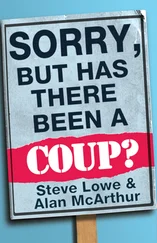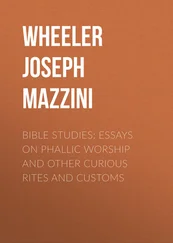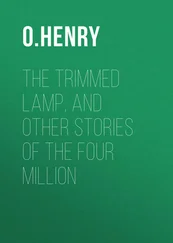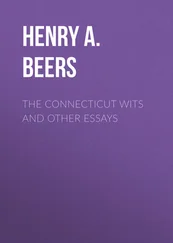Henry Dudeney - The Canterbury Puzzles, and Other Curious Problems
Здесь есть возможность читать онлайн «Henry Dudeney - The Canterbury Puzzles, and Other Curious Problems» — ознакомительный отрывок электронной книги совершенно бесплатно, а после прочтения отрывка купить полную версию. В некоторых случаях можно слушать аудио, скачать через торрент в формате fb2 и присутствует краткое содержание. Жанр: foreign_prose, foreign_antique, на английском языке. Описание произведения, (предисловие) а так же отзывы посетителей доступны на портале библиотеки ЛибКат.
- Название:The Canterbury Puzzles, and Other Curious Problems
- Автор:
- Жанр:
- Год:неизвестен
- ISBN:нет данных
- Рейтинг книги:4 / 5. Голосов: 1
-
Избранное:Добавить в избранное
- Отзывы:
-
Ваша оценка:
- 80
- 1
- 2
- 3
- 4
- 5
The Canterbury Puzzles, and Other Curious Problems: краткое содержание, описание и аннотация
Предлагаем к чтению аннотацию, описание, краткое содержание или предисловие (зависит от того, что написал сам автор книги «The Canterbury Puzzles, and Other Curious Problems»). Если вы не нашли необходимую информацию о книге — напишите в комментариях, мы постараемся отыскать её.
The Canterbury Puzzles, and Other Curious Problems — читать онлайн ознакомительный отрывок
Ниже представлен текст книги, разбитый по страницам. Система сохранения места последней прочитанной страницы, позволяет с удобством читать онлайн бесплатно книгу «The Canterbury Puzzles, and Other Curious Problems», без необходимости каждый раз заново искать на чём Вы остановились. Поставьте закладку, и сможете в любой момент перейти на страницу, на которой закончили чтение.
Интервал:
Закладка:
For example, if we write down nineteen ones to form the number 1,111,111,111,111,111,111, and then ask for a number (other than 1 or itself) that will divide it without remainder, the conditions are perfectly simple, but the task is terribly difficult. Nobody in the world knows yet whether that number has a divisor or not. If you can find one, you will have succeeded in doing something that nobody else has ever done. 1 1 See footnote on page 198 .
The number composed of seventeen ones, 11,111,111,111,111,111, has only these two divisors, 2,071,723 and 5,363,222,357, and their discovery is an exceedingly heavy task. The only number composed only of ones that we know with certainty to have no divisor is 11. Such a number is, of course, called a prime number.
The maxim that there are always a right way and a wrong way of doing anything applies in a very marked degree to the solving of puzzles. Here the wrong way consists in making aimless trials without method, hoping to hit on the answer by accident—a process that generally results in our getting hopelessly entangled in the trap that has been artfully laid for us.
Occasionally, however, a problem is of such a character that, though it may be solved immediately by trial, it is very difficult to do by a process of pure reason. But in most cases the latter method is the only one that gives any real pleasure.
When we sit down to solve a puzzle, the first thing to do is to make sure, as far as we can, that we understand the conditions. For if we do not understand what it is we have to do, we are not very likely to succeed in doing it. We all know the story of the man who was asked the question, "If a herring and a half cost three-halfpence, how much will a dozen herrings cost?" After several unsuccessful attempts he gave it up, when the propounder explained to him that a dozen herrings would cost a shilling. "Herrings!" exclaimed the other apologetically; "I was working it out in haddocks!"
It sometimes requires more care than the reader might suppose so to word the conditions of a new puzzle that they are at once clear and exact and not so prolix as to destroy all interest in the thing. I remember once propounding a problem that required something to be done in the "fewest possible straight lines," and a person who was either very clever or very foolish (I have never quite determined which) claimed to have solved it in only one straight line, because, as she said, "I have taken care to make all the others crooked!" Who could have anticipated such a quibble?
Then if you give a "crossing the river" puzzle, in which people have to be got over in a boat that will only hold a certain number or combination of persons, directly the would-be solver fails to master the difficulty he boldly introduces a rope to pull the boat across. You say that a rope is forbidden; and he then falls back on the use of a current in the stream. I once thought I had carefully excluded all such tricks in a particular puzzle of this class. But a sapient reader made all the people swim across without using the boat at all! Of course, some few puzzles are intended to be solved by some trick of this kind; and if there happens to be no solution without the trick it is perfectly legitimate. We have to use our best judgment as to whether a puzzle contains a catch or not; but we should never hastily assume it. To quibble over the conditions is the last resort of the defeated would-be solver.
Sometimes people will attempt to bewilder you by curious little twists in the meaning of words. A man recently propounded to me the old familiar problem, "A boy walks round a pole on which is a monkey, but as the boy walks the monkey turns on the pole so as to be always facing him on the opposite side. Does the boy go around the monkey?" I replied that if he would first give me his definition of "to go around" I would supply him with the answer. Of course, he demurred, so that he might catch me either way. I therefore said that, taking the words in their ordinary and correct meaning, most certainly the boy went around the monkey. As was expected, he retorted that it was not so, because he understood by "going around" a thing that you went in such a way as to see all sides of it. To this I made the obvious reply that consequently a blind man could not go around anything.
He then amended his definition by saying that the actual seeing all sides was not essential, but you went in such a way that, given sight, you could see all sides. Upon which it was suggested that consequently you could not walk around a man who had been shut up in a box! And so on. The whole thing is amusingly stupid, and if at the start you, very properly, decline to admit any but a simple and correct definition of "to go around," there is no puzzle left, and you prevent an idle, and often heated, argument.
When you have grasped your conditions, always see if you cannot simplify them, for a lot of confusion is got rid of in this way. Many people are puzzled over the old question of the man who, while pointing at a portrait, says, "Brothers and sisters have I none, but that man's father is my father's son." What relation did the man in the picture bear to the speaker? Here you simplify by saying that "my father's son" must be either "myself" or "my brother." But, since the speaker has no brother, it is clearly "myself." The statement simplified is thus nothing more than, "That man's father is myself," and it was obviously his son's portrait. Yet people fight over this question by the hour!
There are mysteries that have never been solved in many branches of Puzzledom. Let us consider a few in the world of numbers—little things the conditions of which a child can understand, though the greatest minds cannot master. Everybody has heard the remark, "It is as hard as squaring a circle," though many people have a very hazy notion of what it means. If you have a circle of given diameter and wish to find the side of a square that shall contain exactly the same area, you are confronted with the problem of squaring the circle. Well, it cannot be done with exactitude (though we can get an answer near enough for all practical purposes), because it is not possible to say in exact numbers what is the ratio of the diameter to the circumference. But it is only in recent times that it has been proved to be impossible, for it is one thing not to be able to perform a certain feat, but quite another to prove that it cannot be done. Only uninstructed cranks now waste their time in trying to square the circle.
Again, we can never measure exactly in numbers the diagonal of a square. If you have a window pane exactly a foot on every side, there is the distance from corner to corner staring you in the face, yet you can never say in exact numbers what is the length of that diagonal. The simple person will at once suggest that we might take our diagonal first, say an exact foot, and then construct our square. Yes, you can do this, but then you can never say exactly what is the length of the side. You can have it which way you like, but you cannot have it both ways.
All my readers know what a magic square is. The numbers 1 to 9 can be arranged in a square of nine cells, so that all the columns and rows and each of the diagonals will add up 15. It is quite easy; and there is only one way of doing it, for we do not count as different the arrangements obtained by merely turning round the square and reflecting it in a mirror. Now if we wish to make a magic square of the 16 numbers, 1 to 16, there are just 880 different ways of doing it, again not counting reversals and reflections. This has been finally proved of recent years. But how many magic squares may be formed with the 25 numbers, 1 to 25, nobody knows, and we shall have to extend our knowledge in certain directions before we can hope to solve the puzzle. But it is surprising to find that exactly 174,240 such squares may be formed of one particular restricted kind only—the bordered square, in which the inner square of nine cells is itself magic. And I have shown how this number may be at once doubled by merely converting every bordered square—by a simple rule—into a non-bordered one.
Читать дальшеИнтервал:
Закладка:
Похожие книги на «The Canterbury Puzzles, and Other Curious Problems»
Представляем Вашему вниманию похожие книги на «The Canterbury Puzzles, and Other Curious Problems» списком для выбора. Мы отобрали схожую по названию и смыслу литературу в надежде предоставить читателям больше вариантов отыскать новые, интересные, ещё непрочитанные произведения.
Обсуждение, отзывы о книге «The Canterbury Puzzles, and Other Curious Problems» и просто собственные мнения читателей. Оставьте ваши комментарии, напишите, что Вы думаете о произведении, его смысле или главных героях. Укажите что конкретно понравилось, а что нет, и почему Вы так считаете.
